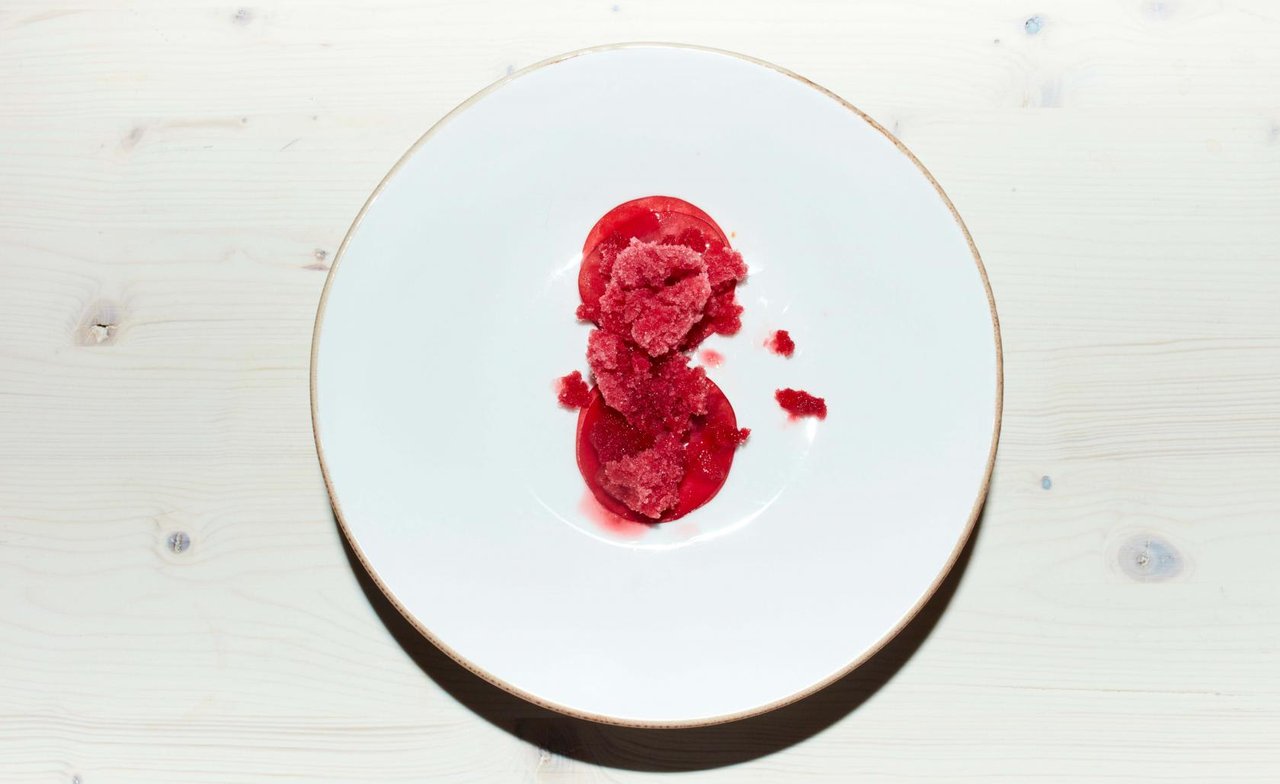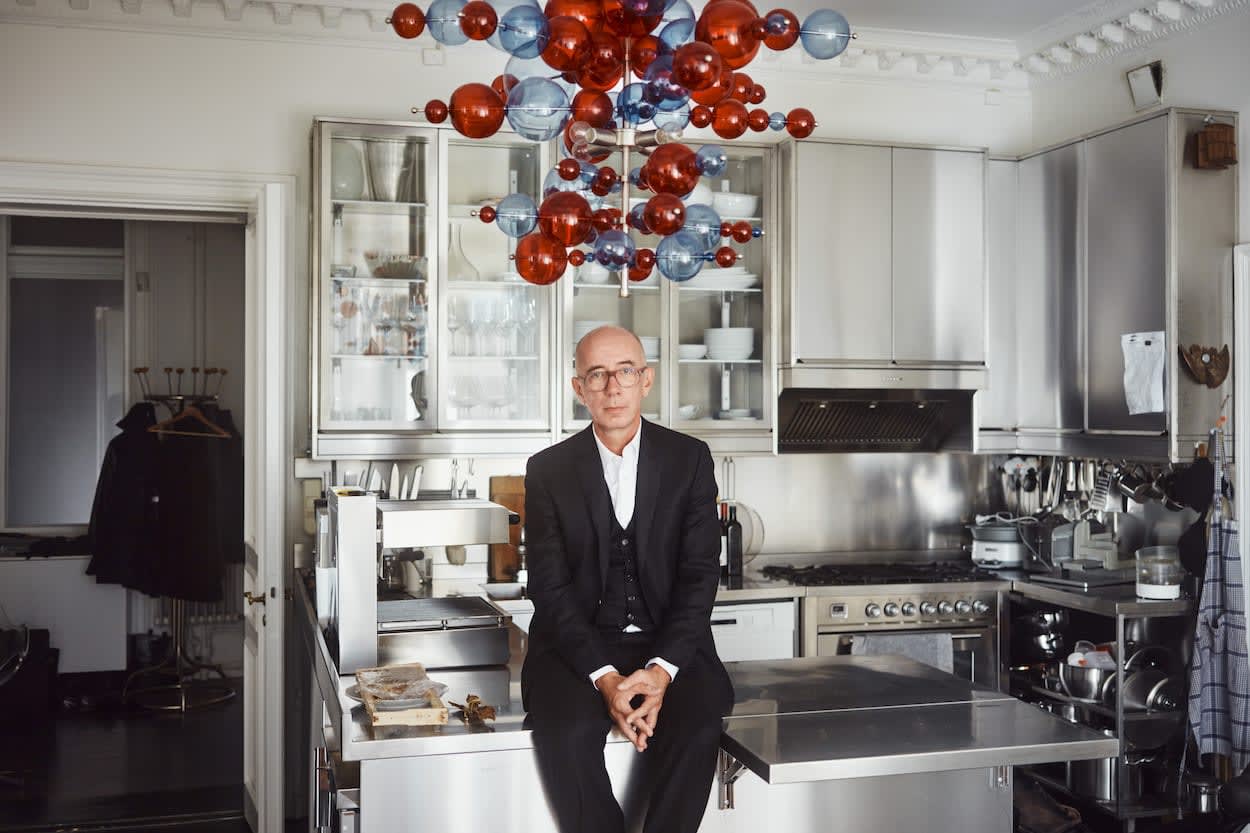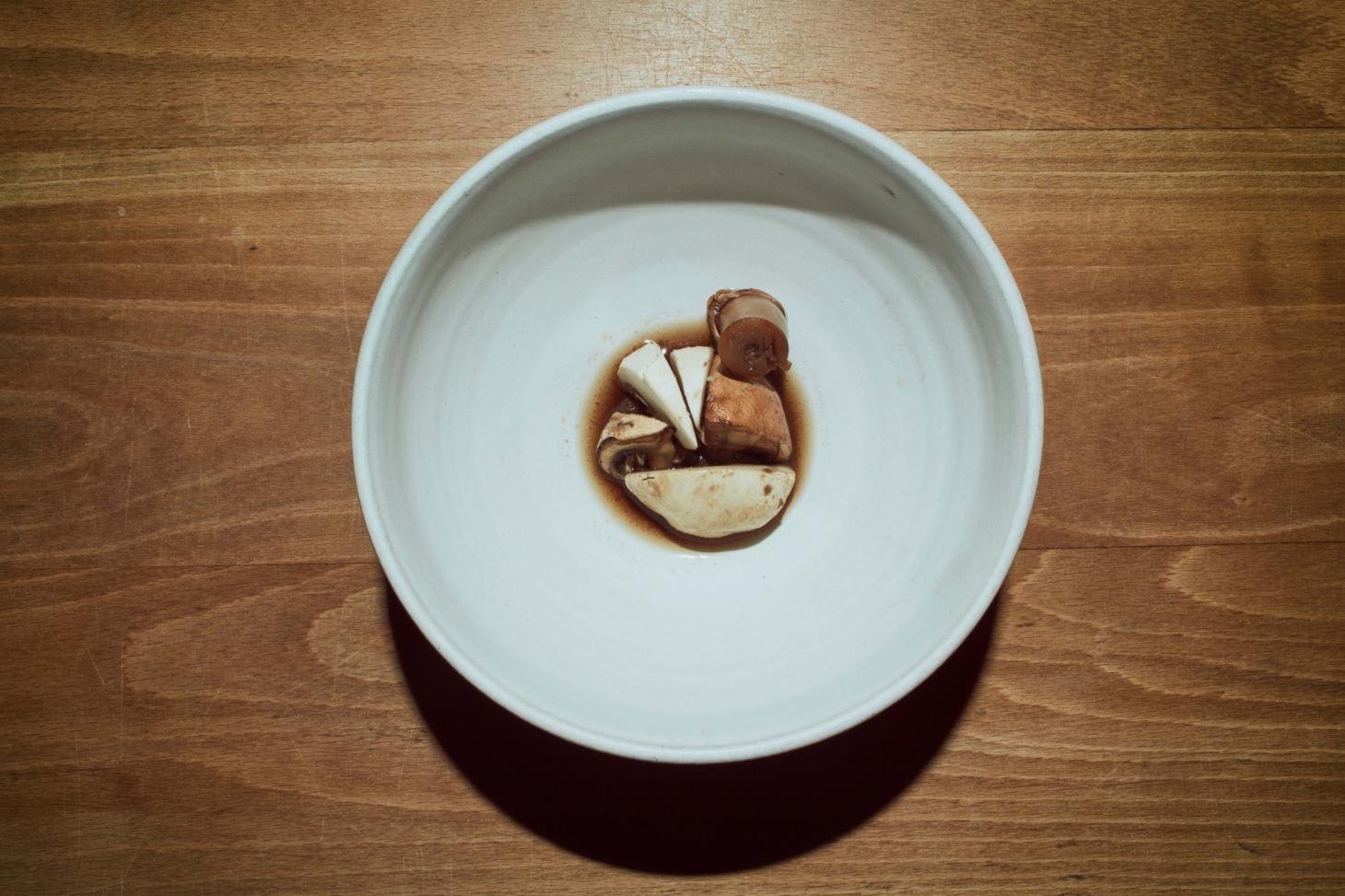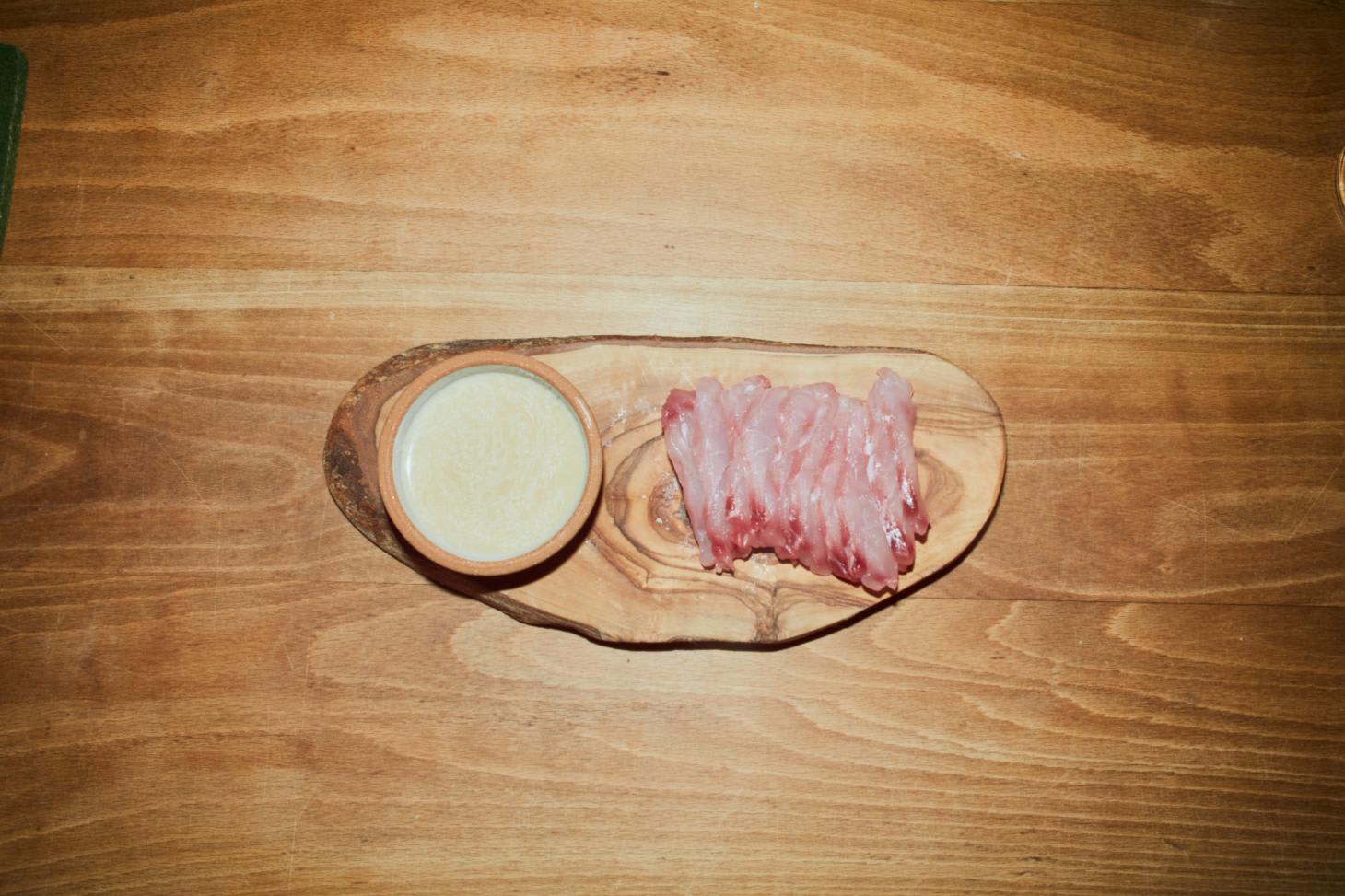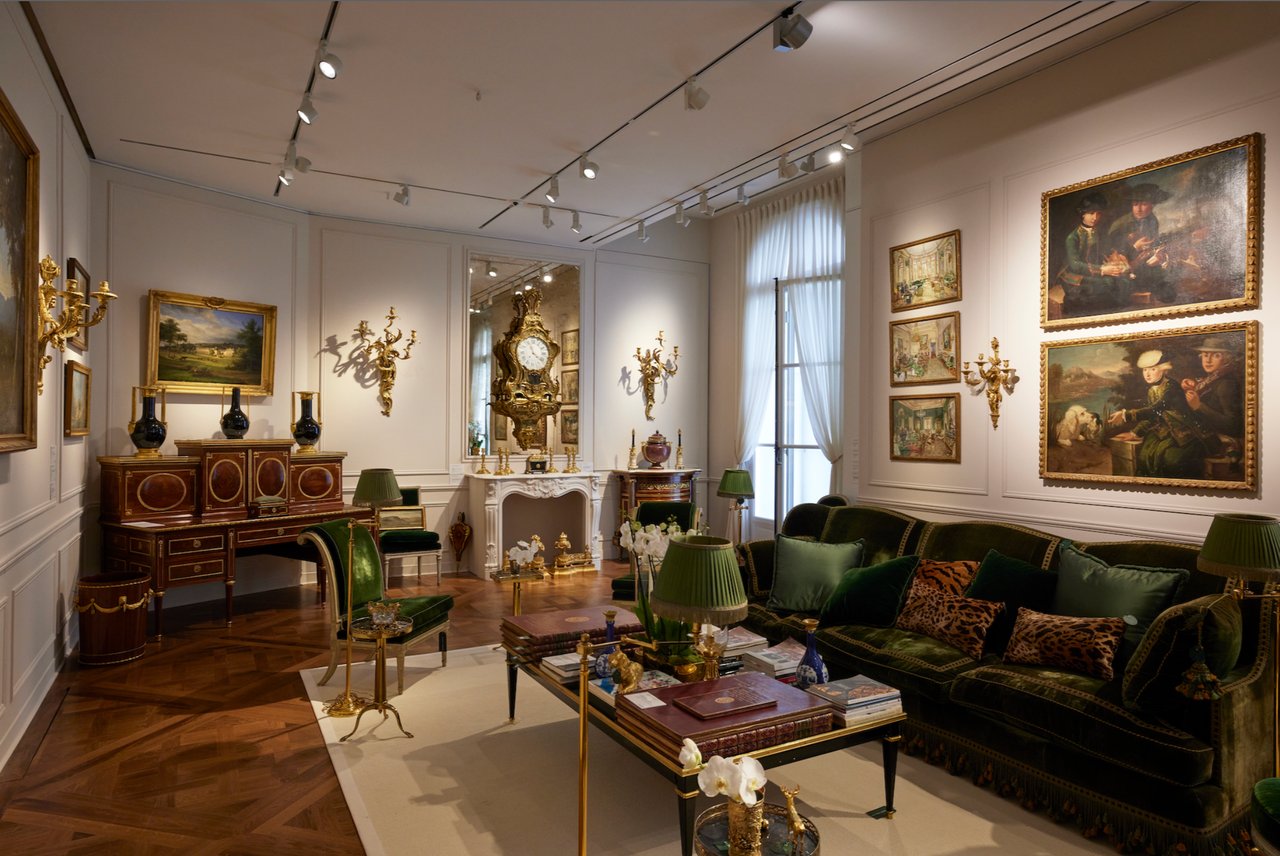Belgian artist Carsten Höller, father of the famed Upside Down Mushroom Room at Fondazione Prada, has just taken his love of fungi further with the opening of his Brutalisten restaurant in Stockholm. Perhaps it should be no surprise that mushrooms feature heavily – he even names one after himself, the Champignon Carsten.
The restaurant is the result of his thirteen-point Kitchen Manifesto Brutalisten, hand-scrawled years ago as a rejection of distraction and waste. Instead, he focuses on single, simple ingredients and takes cues from the early 20th-century architectural movement. Brutalism is characterized by its focus on materials, namely poured concrete in a geometric, monolithic, and imposing style. Often associated with Soviet aesthetics and once lauded as egalitarian and futuristic, the style has fallen out of favor as cold and unwelcoming. Höller takes the concept and adapts it to the palate here: single ingredients parsed, pared down, and then put on a show.
His manifesto, which he calls a “dogma,” has one main rule: ingredients are used alone for a certain dish; only water and salt may be added. Höller goes further, stating that in Orthodox Brutalist cooking, neither water nor salt is added. “Generally speaking, the Brutalist Kitchen is less about recipes and more about finding and preparing ingredients.”
In most every way it is the opposite of comfort food, but Höller would disagree, he adds: “We are born Brutalist eaters, as mother's milk is essentially Brutalist.”
“Chefs from around the world have excelled in creating combinatory food, in terms of which ingredient goes with which. I call this horizontal cuisine, but it has gone too far. What we propose is a vertical approach, one that digs into the taste of an ingredient, tries to bring out its full spectrum by applying the most rewarding cooking techniques to different parts,” Höller has said.
Höller has continually explored the concepts of dividing spaces in his pieces and projects. The scientist-turned-artist's latest project takes place on the plate, with his Brutalisten restaurant in his current home city.
As is similar to his art of dividing spaces, seen in pieces at the Tate Modern and Gagosian gallery, one ingredient is often divided and cooked in different ways. The result is celeriac fermented, poached and grilled, or mushrooms fermented, smoked, steamed and slow-cooked – divided and reunited, all on a single plate.
The cuisine is not about lack of sophistication, but a commitment to purity. Höller believes modern cuisine is all distraction, tricks of tastes and textures. Here the focus is on the flavor.
The use of overlooked, hard-to-get or rare ingredients, or ingredients that are generally discarded, is characteristic of Brutalist kitchen, says Höller in his manifesto. Yellow peas, white asparagus and
Skåne spring rapini sprouts, collected from the southernmost coast of Sweden are among the single ingredient dishes highlighted on the plate. The ingredients are, well, the main dish. They are the sole focus, and decoration – or distraction – is eschewed. Different ingredients are not permitted on the same plate, they must be presented as different units, though they can be served together tapas style.
Höller allows a little respite for the palate, bread and butter are served. He allows that the eater can decide how to combine flavors once they are on the table – his dogma stops at the kitchen door.
Stefan Eriksson is behind that door; Höller and Eriksson created the menu together.
The focus on ingredients – color, taste, smell is in some ways returning to his roots. In his science studies, Höller studied the olfactory signals of insects, before going on to earn a doctorate in agricultural science, before turning his eye to art. He knows his ingredients and where they come from.
In his art, Höller experimented with visual and interactive works. He created art that was based on shared experiences between the audience and the artist and was a major part of the relational aesthetics movement of the 1990s, rising to prominence in the art world alongside Rirkrit Tiravaniia and Andrea Zittel. In 2016 he went on to create the world’s largest tunnel slide, The Slide at the Arcelor Mittal Orbit, with Anish Kapoor. Höller said the slide was created to see the expressions of the participants.
Brutalisten is just steps away from The City Museum of Stockholm, and two of the city's most well-known buildings, the famed Nordiska Kompaniet department store – conceived as part commercial and part cultural theater space – and the landmark PK House. Inside Brustalisten subscribes to the simple aesthetic, all stone walls, slate tables, and slabs of cut wood.
It's not hard to see how Brutalisten is part performance art and part restaurant, food is not only elevated to an artform here, but an experience for the senses.
